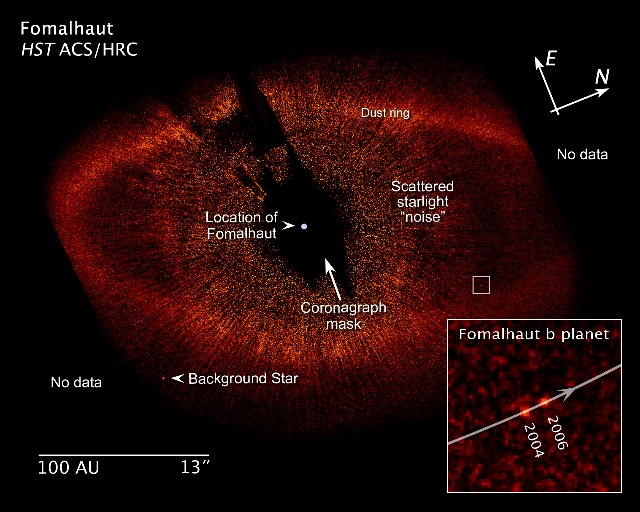Apart from the search for extraterrestrial life within our own solar system (which I'm going to go on record as saying probably exists, at least in microbial form, on Europa, Jupiter's icy moon), the search for planets outside of our solar system might be the sexiest major project in space exploration.* Several such "exoplanets" have been discovered since the mid-90s, and most of them have been on the scale of Jupiter. This, as far as I can tell, is because smaller planets are much harder to detect.
Scientists have traditionally observed exoplanets in two ways: by measuring variations in the brightness of a star as the star is transited by its planet, or by measuring the "wobble" of the star caused by the planet's gravitational pull as it orbits. This latter phenomenon is predicted by Newton's Third Law (which, by the way, also means that when you jump up in the air, you force the Earth to move away from you ever-so-slightly). We've never been able to truly "see" an exoplanet. Until now.
That's right, folks. The Hubble Space Telescope has beamed back the first visible-light image of an exoplanet:

Those two little dots represent a planet three times the mass of Jupiter orbiting the star Fomalhaut at a distance of 10.7 billion miles.
I enjoyed comparing the dry, matter-of-fact reporting byAPOD ("Blah blah blah blah blah blah blah. The Hubble data represent** the first visible-light image of a planet circling another star.") with the pants-shitting enthusiasm of Bad Astronomy ("This is incredible: For the first time, ever, astronomers have captured an optical image of a planet orbiting a star like our own.).
So, there you go. Our ability to observe and measure deep space is increasing by the day. Very exciting times.
UPDATE: Catherine sent me this Washington Post article while I was writing this post. Wild.
* I omit the search for intelligent life, since I don't think that's very high on anyone's list these days. We've basically ruled out intelligent life elsewhere in our solar system and we have a hard enough time finding planets in other systems let alone finding out what's going on on those planets.
** Note the pedantic noun-verb agreement, treating "data" as plural. I love scientists.
